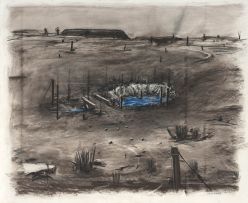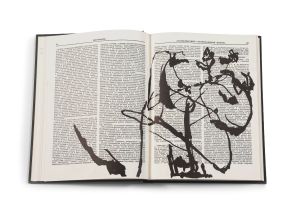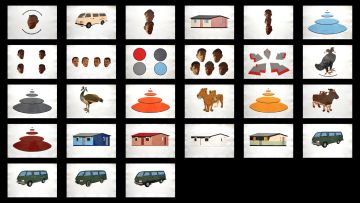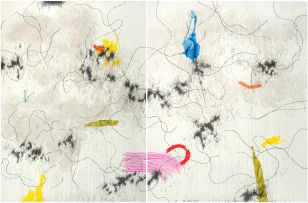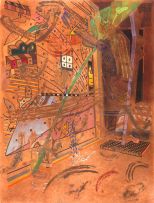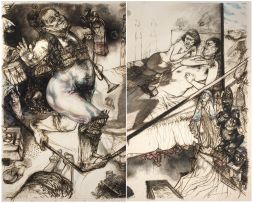Contemporary Art
Live Auction, 17 February 2018
Contemporary Art
Incl. Buyer's Premium & VAT
About this Item
signed
Notes
William Kentridge's fifth stop-animation film, Felix in Exile (1994), begins with this artistic description of an East Rand landscape. It briefly lingers on the landscape, and then cuts to Nandi, a female protagonist pictured drawing the landscape, and then Felix Teitlebaum, seated in a Paris hotel room. The film's title is then introduced. The nearly nine-minute film focuses on Felix, the insecure alter ego to Kentridge's other recurring filmic protagonist, Soho Eckstein, a rapacious property developer. The film cuts between Nandi, who views scenes of the political strife that wracked the East Rand in the early 1990s, and Felix, who fills the walls of his room with landscape drawings. The violent strife ultimately claims Nandi. Her death causes Felix's grief to flood his room. The film concludes with Felix bathing in the blue pool depicted in this pivotal drawing. Kentridge's film and 32 drawings were exhibited at the Goodman Gallery, Johannesburg, in October 1994. Kentridge stated: "A central characteristic of the East Rand terrain, is that it is a landscape constructed rather than found … It is a landscape that is explicitly social. It is also temporal - everything in the landscape has the signs of having been put there and having been made - all features have the potential to be unmade."1
1. William Kentridge, 'Felix in Exile: Geography of Memory', in Carolyn Christov-Bakargiev (ed.) (1998), William Kentridge, Brussels: Societe des Expositions du Palais des Beaux-Arts de Bruxelles, 1998. Pages 95 to 96.
Literature
Dan Cameron, Carolyn Christov-Bakargiev, and JM Coetzee. (1999) William Kentridge, New York: Phaidon Press. Illustrated in colour on page 122.
Carolyn Christov-Bakargiev, (2004)William Kentridge, Milan: Skira. Pages 94 to 98

